In an effort to reach my reading goal of 40 books this year, I’m going to start keeping track here of the books I finish each month. Although I keep this information in a database program, it will be easier for me to see if I make each month’s quota.
My Name is Lucy Barton by Elizabeth Strout
Recommended
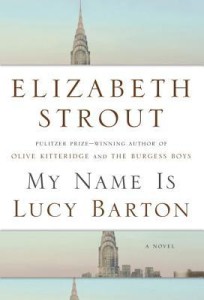 Many years later, first-person narrator Lucy Barton recalls the time her mother visited her in the hospital. Lucy spent nine weeks hospitalized after an appendectomy because of a fever the doctor couldn’t figure out and couldn’t eliminate. Up until that time Lucy had had little contact with her mother since leaving home as a young woman.
Many years later, first-person narrator Lucy Barton recalls the time her mother visited her in the hospital. Lucy spent nine weeks hospitalized after an appendectomy because of a fever the doctor couldn’t figure out and couldn’t eliminate. Up until that time Lucy had had little contact with her mother since leaving home as a young woman.
Her mother stays for five days, during which the two women gossip about the lives of several people in Lucy’s small, rural hometown. These stories provide a round-about way of discussing what life is all about and how people treat each other. Lucy never does confront her mother with the question she most needs an answer to—why her mother allowed some unspecified “thing” (suggestions of physical and/or sexual abuse)—happen. Yet before her mother unceremoniously leaves to return home, Lucy has come to terms with the insatiable desire for a mother’s love and the fragile nature of memory.
The House of Mirth by Edith Wharton
Highly Recommended
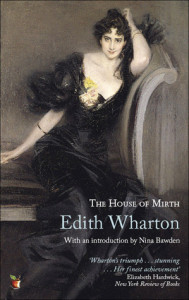 This was the February selection of my in-person classics book club. Published in 1905, it was Wharton’s first novel. It portrays New York high-society life at the turn of the twentieth century.
This was the February selection of my in-person classics book club. Published in 1905, it was Wharton’s first novel. It portrays New York high-society life at the turn of the twentieth century.
The novel tells the story of beautiful Lily Bart. At age 29, 11 years after she made her debut into society, Lily is well past the time when she should have found a suitable, meaning rich, husband. Born into society but forced to its margins by her father’s financial ruin, Lily must find a husband to provide the dresses, jewels, houses, prestige, and power she needs to maintain her place in society.
A life outside of the social circuit is something Lily cannot even consider. As her finances dwindle, so do her opportunities and her reputation. This novel deftly portrays the lives of people for whom appearance is everything, and the fate of people, like Lily, who are unable to play the game successfully.
Writing Down Your Soul by Janet Connor
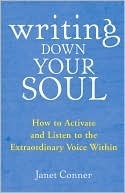 Anyone interested in journal writing will appreciate Janet Connor’s story of how, at the darkest point of her life, she discovered a way to tap into her own inner strength through writing.
Anyone interested in journal writing will appreciate Janet Connor’s story of how, at the darkest point of her life, she discovered a way to tap into her own inner strength through writing.
Although her practice involves writing in a journal, she insists that it differs from standard journal writing because of these four characteristics: intention, purpose, process, and commitment. Connor mines the scientific literature of mind-body medicine to explain how writing that combines these four elements can put us in touch with our own inner wisdom by shifting our consciousness and realigning the brain’s neural pathways. She then lays out a four-step approach for accessing that wisdom.
I felt that the book contained much repetition and padding. Nonetheless, it does offer detailed instructions—even though perhaps, in places, too detailed—for anyone interested in giving Connor’s system a try.
A Little Life by Hanya Yanagihara
Highly Recommended
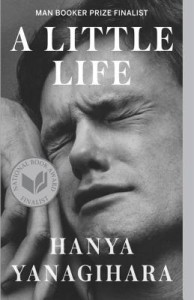 This big-hearted book contains so much humanity that I’m going to be thinking about it for a while before attempting to write a review. It’s one of the most affecting books I’ve ever read. As much as I love literature, I can’t remember the last time a book actually brought me to tears.
This big-hearted book contains so much humanity that I’m going to be thinking about it for a while before attempting to write a review. It’s one of the most affecting books I’ve ever read. As much as I love literature, I can’t remember the last time a book actually brought me to tears.
If you’re going to read only one novel this year, make it this one. It’s long at 800+ pages, but spend the time to read it slowly and savor it.
Slow Reading by John Miedema
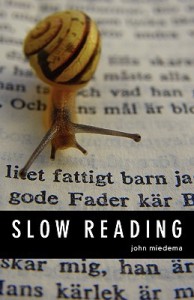 Miedema put this book together from research for a graduate course in library and information science. He defines slow reading as a voluntary practice done to increase enjoyment and comprehension of a text, a process that some people describe as “getting lost in a book.”
Miedema put this book together from research for a graduate course in library and information science. He defines slow reading as a voluntary practice done to increase enjoyment and comprehension of a text, a process that some people describe as “getting lost in a book.”
Miedema is discussing the reading of fiction here. Here are a few quotations:
“A fictional work provides a sand box for imagining other identities and choices”(p. 56).
“Children can use fiction as a testing ground for their future selves. Is there any reason to stop this process when we reach adulthood? It is sad and a bit creepy to watch those adults who cease to imagine. It is as if their inner landscape is withering” (p. 57).
”Slow readers have a particular capacity to open up to new ideas, and allow the sense of self to be transformed” (p. 62).
![]()
Year-to date total of books read: 7
© 2016 by Mary Daniels Brown

